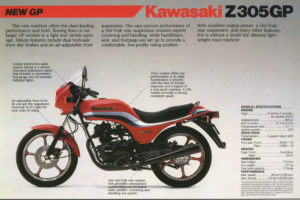For many decades, OEMs like Honda have used clay modeling extensively in the process of designing their new bikes. Take the CBR1000RR-R, which won Honda’s first-ever Red Dot design award for a motorcycle in 2020. While clay modeling wasn’t the only part of the design process, it was an important part of how Honda brought that design to life.
It’s 2021 now, though, and technology is shifting and changing with the times. That change is nowhere more evident than the announcement that Honda R&D Europe has teamed up with Italian 3D printing company WASP (nothing to do with Vespa). The goal of the partnership is to create a brand-new 3D-printed prototyping process that is finished by hand. That way, they say, you get the best of both worlds.

Need a part for your 1976 Puch MC20 Twin Carb? Make it yourself.
WASP is no stranger to using its 3D printing processes in the motorcycle world. Back in 2019, the company was already making 3D printed carbon fiber parts on demand for bikes in the Italian Speed (CIV) motorcycle racing championship. And in October, 2020, BMW’s WSBK team made news when it started bringing a 3D printer to races to print up new parts trackside.
I can’t show you any of the results of Honda’s work just yet, because Honda and WASP haven’t unveiled them as of now. They plan to do so “in the coming months,” however, and we definitely look forward to seeing what they’ve created together. Meanwhile other companies are getting into this wonderful new world. One of the accessories that Saab will soon be selling with a new Viggen fighter jet is a 3D printer to make required replacement parts wherever the plane is stationed. They have demonstrated the ability to do this.
But one of the most important aspects of 3D printing is that it is not restricted to the big teams and big brands. Anybody can play. Anybody can buy a 3D printer and set themselves up as a supplier of parts, even modified ones. Presumably there will be some kind of licensing arrangement, in due course, whereby operators other than the original manufacturer will be able to legally print ‘original’ parts to order. But dip me in digital files and throw me to the copyright pirates, there will also be people producing knock-offs.

Will someone scan and reproduce a Britten? The only difficult part will be finding one you can strip down to scan!
It doesn’t take much imagination to see some small bike shop somewhere in the boonies, with effectively no spares stock but the digital patterns on its computer hard drive for all the bits that customers need regularly. Broken your clutch lever again? No problem, just leaf through that copy of Australian Motorcyclist (just as an example, seeing it’s my magazine) while I print you up a new one. Here we go, and it even has the original branding on it. Are you sick of breaking your clutch lever? I’ll print you up one with a strengthening rib on the back, just a sec while I modify the instructions to my trusty 3D printer.
数字文件将这个particula的“黄金”r gold rush, and they are far easier to trade than physical objects. You can also duplicate them as often as you like, so every time someone sells the file for the left-hand engine casing of an XYZ motocrosser, they create a potential competitor who can sell that file on, as well as printing and selling the cases.

Want your own Dymaxion? Maybe find a model, scan it and scale it up? Okay, that might be stretching it. For now.
Can you imagine the full extent to which this will change things in the motorcycle (and of course not only the motorcycle) industry? You will not need a warehouse to supply spare parts, either legally or… otherwise. You will not even need any shelves. All that will be required is a table to put your printer on, with enough space for some feedstock, and a power socket. No huge investment in buildings or spares. A bit of advertising will be the only overhead you will have, apart from feedstock and electricity. Oh, and there is a good chance you will be getting your electricity for free from the panels on the roof.
There is no need to restrict this to imitations of ‘genuine’ parts. Creative customizers already do not need to cut and shut metal, but can simply design parts on their computer screen and then print them out. Engraving? Why bother. Print a new part with the ‘engraving’ in place, all according to your digital file. Maybe programming will be the new skill for customisers, not painting or metalwork. I can’t even imagine all of the new design possibilities this opens up.

All the hard work of shaping panels can be done in the computer, not at the English Wheel.
And again, once the files exist for the newly-created part, they can not only be used to print more parts for customers. They can be sold so others can print parts for their customers. Imagine the boost this will be to custom shops in places like Indonesia and Thailand, where wonderful custom work is being done which can only be distributed internationally with great difficulty. No need; buy the files over the web and just get the parts printed up.
Back in the first half of the 15thCentury, Johannes Gutenberg could not have imagined how much he would change his world with the printing press. I suspect we cannot even begin to imagine how much 3D printing will change ours.







